RESOURCES



U of I Moscow is located on the homelands of the Nimiipuu (Nez Perce), Palus (Palouse) and Schitsu’umsh (Coeur d’Alene) tribes. We extend gratitude to the Indigenous people that call this place home, since time immemorial. U of I recognizes that it is our academic responsibility to build relationships with the Indigenous people to ensure integrity of tribal voices.

Rinker Rock Creek Ranch on the Grid
Welcoming Readers
Letter from the Dean
Letter from the Advisory Board Chair
CNR in the Headlines
Expanding Curriculum
Rinker Rock Creek Ranch on the Grid
Women of Natural Resources Through the Decades

Environmental Science
Empowering Women’s Education
Idaho’s Changing Demographics Story continued on Page 21
Fish and Wildlife Sciences
Finding a Career While Wrangling Rabbits
Fish and Wildlife Film Festival Takes Off
Saving Otters, Inspiring Future Conservationists Story continued on Page 23
Forest, Rangeland and Fire Sciences

Collaborating to Find Sustainable Insulation
Monitoring Blitz
From Fiddle to Forestry
Natural Resources and Society
Partnering With State Parks for Recreation Research Equitable Education Initiatives
Tracking Microbes in Smoke
Bridge to Doctorate
In the Middle of the Action Story continued from page 13 Diversity in Conservation
Saving Otters Story continued from page 14
Introducing CNR’s New Assistant Director Brave and Bold Stewardship at McCall
t the College of Natural Resources we endeavor to offer opportunities for quality education to every student. That means affordable access to our award-winning programs so that nontraditional students such as Harrah Friedlander are prepared to pursue graduate studies in conservation biology. Access so rural students like Dalton Johnson from Rigby, Idaho can study rangeland conservation and give back to their community. Access so that tribal students like Hannah Funke, of the Flathead Reservation in northwest Montana, can earn a doctorate while studying how fires impact plant mortality.
Access for determined young women like Brynne Johnson so they can become a leader in forestry. Access, so that first generation students like Emma Arman can bridge environmental divides between citizens and industry. And access, so that more military veterans like Marine Bill Perry can transition to full-time positions. In short, our mission is to provide access to meaningful experiences in the classroom and the field that translate into careers that matter.
We’re doing this by expanding scholarships to students who need financial assistance. We’re offering associate degrees for the first time at the University of Idaho, enabling students to learn essential workforce skills in forest operations, nursery management or wildland fire and fuels management. And now, students graduating from our community college partners like the College of Southern Idaho can enroll in our 2+2 programs in aquaculture and rangeland management, allowing them to take their first two years at their local college and matriculate to CNR for the final two years of their education. We have a strong legacy of working with our partners across all areas of the college to remain relevant in today’s world. Maintaining access to these opportunities is critical to our growing state and region.
It’s true what you’ve heard about Idaho’s growing population. One third of our residents have moved to the state in the past 10 years. And with that, more than ever people are recognizing the importance of natural resources. Fortunately, CNR specializes in careers that matter. We have an obligation to continue to expand access to make those meaningful careers possible for every student.
With gratitude, Dennis Becker, Ph.D. ’02

Dean

he beautiful state of Idaho is adorned by wide-open spaces, wilderness, forests and rangelands that shape our lifestyle and communities. Just as the diversity of our natural resources and landscapes have strengthened and shaped Idaho, diversity has strengthened and shaped our college. CNR has long recognized that bringing together different views, cultures and values builds a more complete vision. The CNR Advisory Board is working collaboratively with leadership, faculty, staff and students to build programs to attain this vision because making effective and sustainable changes requires more than a purely ecological or economic approach. Lasting change requires understanding cultural and social values, which are as diverse as the landscape.
I am proud of our work to create opportunities and our adaptability as we seek new ways to increase access to higher education. Tremendous strides have been made in student recruitment and retention among rural and Indigenous communities. Increased outreach to rural and agricultural communities is bringing students who know and love the land to U of I. Cohorts for Indigenous students are helping improve student success and outcomes while incorporating Indigenous ecological knowledge into U of I research. Distance learning allows us to reach students without requiring them to relocate. Our two-year associate degrees have launched, providing new avenues to higher education with less financial commitment.
Throughout this issue, you’ll learn about students who found access to opportunities and education through CNR programs. As we celebrate their success and achievement, we look ahead to the ways we can continue to grow as a college. CNR is committed to increasing access for all who love the landscape and who want to build a career managing and safeguarding it. I am excited to see the incredible impact our alum will make in the world.
We envision an Idaho that continues to thrive through valuing our place, people, natural environment and communities. CNR is at the forefront of this vision, paving the way for students of all backgrounds to shape and strengthen our future.
Sincerely, Gretchen Hyde Advisory Board Chair Executive Director, Idaho Rangeland Resource Commission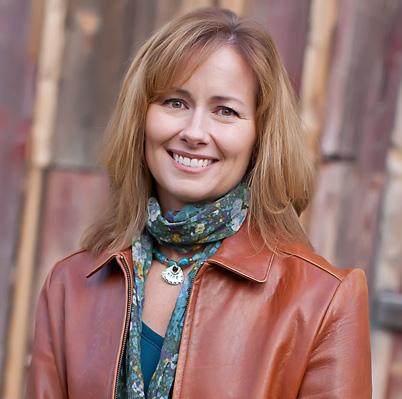

The College of Natural Resources magazine is published annually for alumni and friends of CNR. Subscription is free. The magazine also is available online in its entirety at uidaho.edu/cnr.
Magazine Staff & Contributors
Dennis Becker, Dean
Kelsey Evans, Editor and CNR Writer in Residence
Ren Lawson, Rangeland Center Communications
Ralph Bartholdt, U of I Communications
Leigh Cooper, U of I Communications
Marie Ortega, U of I Communications
University of Idaho 875 Perimeter Drive MS 1142 Moscow, ID 83844-1142
Email: cnr-alumni@uidaho.edu
Design – U of I Creative Services
Photography – U of I Visual Production. Other image credits noted on the pages where they appear.
Our faculty and students regularly make regional and national news for their research. Below are a few recent headlines.

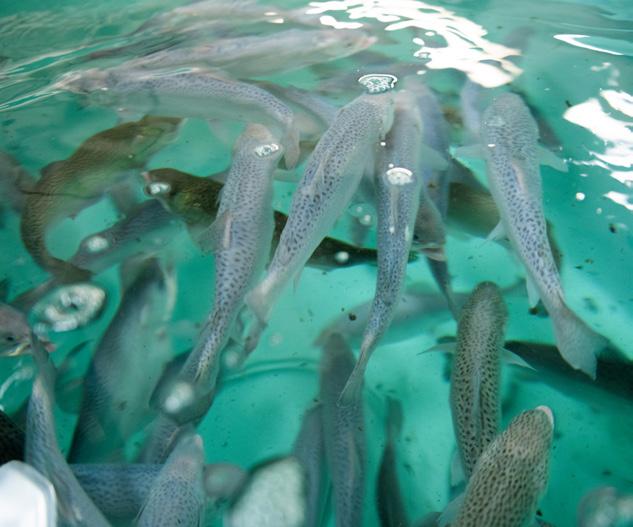
“I plan to use an integrative and collaborative approach to come at research questions from multiple perspectives to overcome problems related to feed costs and sustainability, losses to disease, water quality management and genetic improvements,” said Joe Bladsoe, extension aquaculture specialist at Hagerman Fish Culture Experiment Station.
U of I graduate student Will Lubenau studied the impact of catch-and-release on the mortality of endangered wild steelhead in the Snake River Basin with CNR’s Mike Quist. His findings were featured in Field and Stream Magazine, Idaho Press and Lewiston Tribune (with Mike Quist), Big Country News, Field & Stream Magazine, KTVB and the IDFG Blog.
Andrew Nelson, director of the Franklin H. Pitkin Forest Nursery, was featured on Idaho Matters to discuss how the Pitkin Nursery is playing a vital role in reforestation efforts.
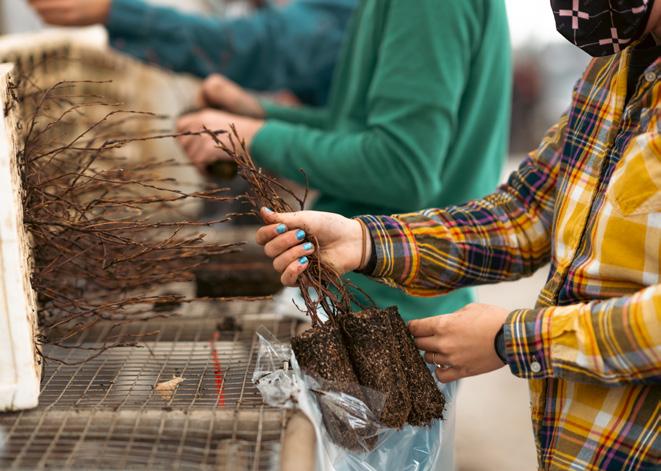
A new virtual fence is being developed by a research team led by Karen Launchbaugh, Rangeland Center director. It is the first one designed specifically for the challenges of remote, rugged western terrain and has been featured in Beef Magazine, KMTV, PNW Ag Network and RFD Magazine. Virtual fences allow for livestock management with fewer physical barriers, which can benefit ranchers, wildlife and conservation work.
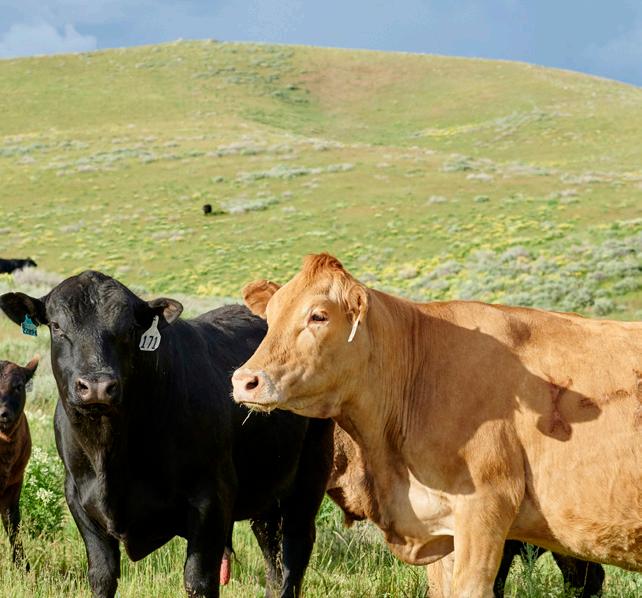
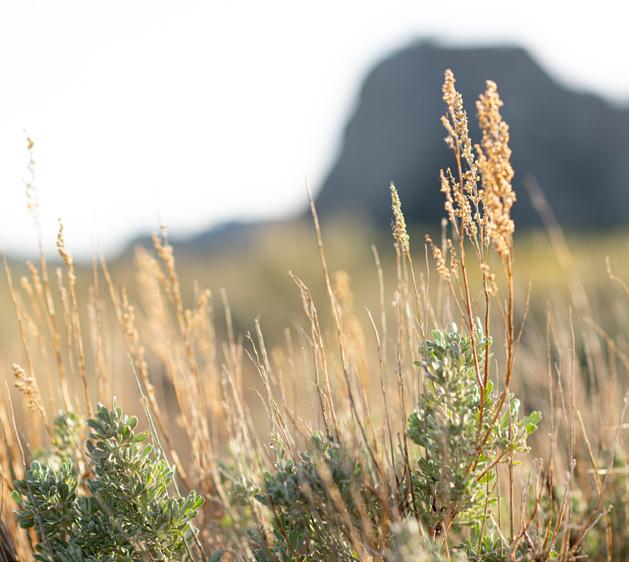
Boise Public Radio discussed Eva Strand’s decade-long work on evaluating the effectiveness of different tools and strategies for reducing wildfire intensity in sagebrush steppe ecosystems. Results published in academic journal Ecosphere show that over a decade, burning and thinning reduced the overall amount of combustible vegetation, but herbicide did not.
Grist highlighted Leda Kobziar’s innovative work in pyroaerobiology. Life in smoke has “big implications for our world and our health. Inside the cloud of smoke, amid all the dust and ash, are hundreds, or even thousands, of different bacteria and fungi.”
U of I is the first university in the nation to utilize a fully digital single-tree inventory in its operational management, research and teaching. “Lidar helps us collect data faster and more accurately than having boots on the ground. It lets us estimate the species of trees in different stands, model timber volume, vegetation densities from the ground to the canopies, as well as quantify biomass and carbon stored on different landscapes,” said Jordan Williams, U of I forestry graduate.


Coeur d’Alene Press shared how U of I’s new associate degrees are filling workforce niches.
“We believe our program is uniquely positioned to support the kinds of handson workforce development program that many in Idaho’s forest products sector are requesting,” said Steve Shook, professor of Forest and Sustainable Products.

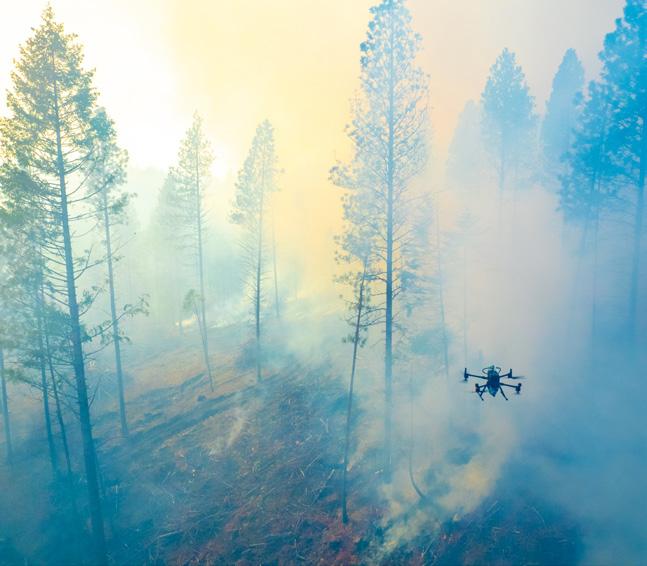
ith the addition of the University of Idaho’s first associate degrees, new Bachelor of Science offerings in Ecology and Ecosystem Services and Conservation Biology, and individualized emphasis tracks in the Master of Natural Resources and Environmental Sciences programs, CNR is expanding opportunities for all levels of students. New offerings across the college are filling niches of our evolving, diverse natural resources industry.
For the first time in its 131-year history, Associate of Science Degrees are being offered at the U of I. As of fall 2022, CNR has specialized two-year degrees available in forest operations and technology, forest nursery management, and wildland fuel and fire technology.

“Students in these programs utilize our unique resources and expertise to help meet the workforce demands of the growing forestry and wildland fire industries,” said Charles Goebel, department head of Forest, Rangeland and Fire Sciences at U of I.
Through flexible classwork, certifications, networking, and hands-on experience students will develop essential workforce skills in just two years. With the help of commercial harvesting equipment and technology, they will help manage U of I’s more than 10,000 acre Experimental forest and in engage in Pitkin Nursery’s experimental commercial forest nursery program.
“We already had the resources in place,” said Steve Shook, CNR professor of forest & sustainable products. “And as the state’s landgrant university, we are in a position of responsibility to provide this kind of instruction toward the sustainability of our natural resources and our workforce.”
Fall 2022 also brings the individualization of the Ecology and Ecosystem Sciences and Conservation Biology Bachelor of Science degrees, previously combined as Ecology and Conservation Biology.
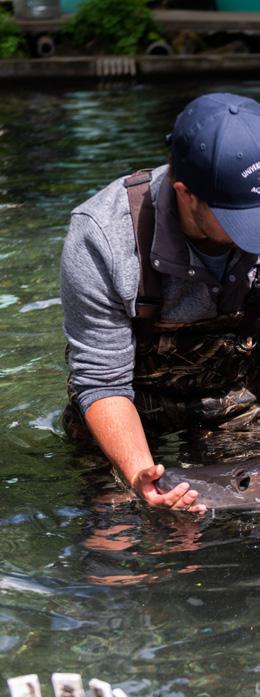
“By offering separate, targeted degrees, we’re on competitive footing with peer institutions,” Shook said.
Conservation Biology focuses on conservation of biodiversity and natural resources, while Ecology and Ecosystem Sciences hones in on relationships between organisms and their environment. Both degrees provide conceptual foundation for applying ecological principles to conservation.
“There has never been a more important time to train students in distinct disciplines,” said Janet Rachlow, professor of wildlife ecology and department head of Fish and Wildlife Sciences. “Separating the majors of conservation biology and ecology allows CNR to recruit, train and empower professionals with expertise to advance both the science of ecology and the practice of conservation.”
The Fish and Wildlife Department is adding emphasis areas in Science and Management, and Conservation Law Enforcement. Both emphases are available within the respective fisheries sciences and wildlife sciences bachelor’s degrees. Wildlife sciences is also offering a third emphasis option, human wildlife interactions.
The human wildlife interactions emphasis is “inclusive of interdisciplinary, human sides of wildlife interactions,” Rachlow said. Coursework includes a greater number of social science classes in the Department of Natural Resources and Society and other colleges across campus.
Requirements for students interested in law enforcement conservation in either fisheries or wildlife sciences will include additional additional coursework that integrates biology and ecology with social sciences including psychology, conflict management, and criminal justice..

Regardless of emphases, every fish and wildlife student completes at least one professional internship that expands their education and provides invaluable field experience before graduation.
“The internship program has been positive for not just students, but for mentoring professionals, alumni and collaborators,” Rachlow said.
To become involved with student internship programming, reach out to cnr@uidaho.
To learn more about online graduate degrees, visit uidaho.edu/cnr/natural-resources-online.
Developed in 2013, the Master of Natural Resources (MNR) is a forward looking graduate program that can be pursued remotely online. The program has since grown to encompass five specializations tailored to student and stakeholder needs. The online program now has over 250 students from every state and several countries. There is also an in-person option for environmental education offered at the McCall Outdoor Science School in McCall. To meet robust demand, CNR has also expanded online offerings to include of Master of Science in Environmental Science, of which 100 additional graduate students are enrolled as of Fall 2022.
The MNR and Environmental Science programs are quickly becoming a household name for providing working professionals with credentials to move up in their careers.
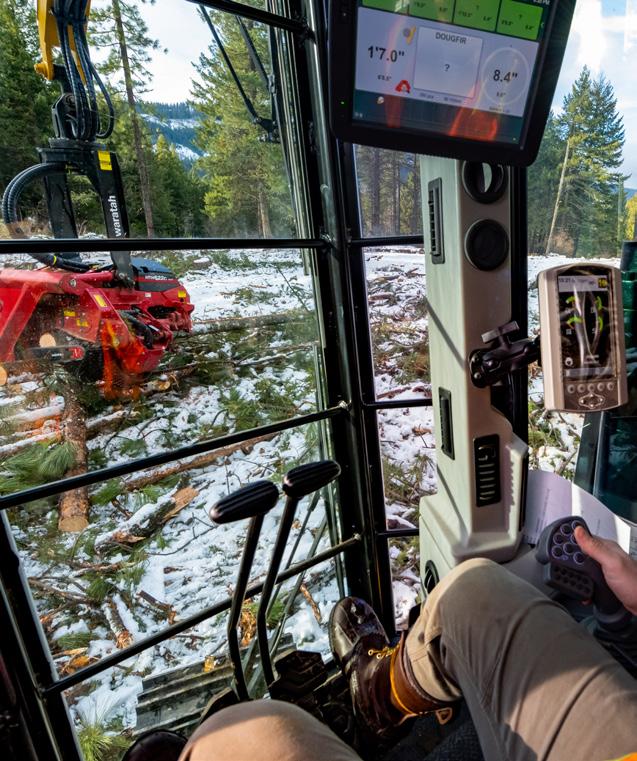
“Most of our advertising is by word of mouth because students and industry have been very satisfied by their experience,” said Leda Kobziar, associate professor of Wildland Fire Science and interim director of Graduate Studies and the MNR program.
Students receiving new credentials to advance their careers “often move up in positions before even graduating,” Kobziar said.
Meanwhile, other students from a wide variety of backgrounds enroll to make value-aligned career shifts.
“They’ve witnessed what’s going on in natural resource management, especially in relation to climate change, and realize they want to make a change in the world. It’s amazing how they become effective, passionate advocates,” Kobziar said.
Article by Kelsey Evans, CNR Writer.
ocated in the Wood River Valley of central Idaho, U of I’s 10,400-acre Rinker Rock Creek Ranch (RRCR) has received a $1.34 million grant appropriated by Idaho Congressman Mike Simpson. The congressional funding will expand educational opportunities in rangeland management, animal science and conservation. The grant, secured by the College of Natural Resources, enhances hands-on learning for U of I students, faculty, the public, and postsecondary and K-12 groups, all while preserving the the pristine remoteness, size and ecological diversity of RRCR.
“The funding gives us a much-needed infusion to take our research capacity to the next level, and to continue to improve our ability to grow education and outreach programs,” said Cameron Weskamp, Operations Manager of RRCR.
Improvements include the purchase of equipment to facilitate research for cattle management, livestock grazing, water quantity and quality conservation, sagegrouse management, and techniques to combat invasive annual grasses and associated wildfire.
“We are investing in equipment including a new truck and new ATVs (all-terrain vehicles) to help us meet the needs of researchers and students as they come to work and learn,” Weskamp said.
Notably, facility improvements will provide space for research demonstrations, including renovation of the historic barn for meeting space and classroom instruction. Solar power and satellite internet will be installed to facilitate classroom connectivity and research training.
“A lack of infrastructure and service poses challenges when you need to house researchers,” said Tracey Johnson, assistant professor of Fish and Wildlife Sciences and director of research at RRCR.
Sage-grouse research, for example, requires at least three researchers staying on the ranch for several months.

“Having researchers living in tents in late summer with no indoor place to shelter is
dangerous when wildfire creates smoky conditions,” Johnson said. “This funding will provide a safe space to stay and do lab work, and researchers will benefit from having digital resources at any time.”
Georgia Harrison, a doctoral student in Plant Sciences in the College of Agricultural and Life Sciences, will benefit from improvements at the ranch as she continues to assess resiliency of the native sagebrush plant community. Harrison also researches wildfire risk and behavior in sagebrush ecosystems.
“It’s been great to have this large, pristine place with intact systems to work in,” Harrison said. “My study area is about 80 acres, half of which we treat with herbicide, and the other half we don’t. There is great diversity in the plant communities and terrain.”
Harrison also enjoys staying at RRCR during the summer.
“It’s important to have a home base and a sense of community with the other researchers and managers,” she said.
By working with others at RRCR, Harrison is undertaking interdisciplinary research.
“We have a research center so it’s easy to extend and add other people to a project,” Harrison said. “For example, I’m adding sampling with drones to my project, which I wouldn’t be able to do without the collaborative nature of the Ranch.”
Harrison enjoys field work, especially with field technicians and undergraduates.
“There are many different research opportunities for fellow students to experience, which is powerful because there’s a lot of diversity in the paths we want to explore,” Harrison said.
She believes facility improvements will support easier access and living conditions while preserving the culture and experience of RRCR.
“Right now, life at camp is good but a little rugged. Any improvement will go a long way.”
The congressional funding will also support students and their work, especially in establishing longer-term research and education projects, and offering additional field opportunities for longitudinal research.
“It is always good to have more than one or two years of data,” Harrison said.
Hadley Dotts, a junior rangeland conservation major with a land and livestock career track, is excited about RRCR’s forthcoming investments.
Dotts was a cattle production and range management environmental intern at the ranch in Summer 2021.
“I was interested in animal sciences and the production side of the rangeland, but I didn’t have enough experience to do that on my own,” Dotts said. “Instead of it
taking several years to get that experience, I got to do it all in one summer.”
Dotts worked with public land agencies and collaborated with researchers, all of whom had different types of careers. “My favorite part was seeing every aspect of the whole operation,” Dotts said. “I began open minded, so it was great to have a welcoming place where I wasn’t afraid to ask questions and learn.”
Anastasie Echeverria, a CNR senior majoring in rangeland conservation and forestry who interned at RRCR in Summer 2020, also raves about her experiences. “I worked with Kenny Randall, a master’s student in the Department of Fish and Wildlife Sciences, to research the effects of cattle grazing on sage-grouse habitat,” Echeverria said. “I helped monitor the pastures before and after grazing, maintained temporary fencing and moved cattle.”
Echeverria also checked and recorded information from public recreation access logs, did riparian work including constructing beaver dam analogs, and learned irrigation techniques with livestock manager Wyatt Prescott.

“I mapped, identified and sprayed weeds. I managed equipment including a boom sprayer, an ATV, four-wheelers and trailers,” Echeverria said. “I helped manage the Ranch as a whole, including the tents and property around ‘Cow Camp.’”


The congressional funding will help renovate the historic barn, which is centrally located on the ranch, to make it easily accessible for researchers and school groups.
“Ranch life is sometimes hard because our camp doesn’t have electricity, service or running water,” Dotts said. “The improvements are awesome to hear
about because it will make the Ranch more welcoming.”
Tracey Johnson advocates for Harrison, Dotts, Echeverria and countless other students.
“It’s a beautiful place, we just don’t have much built,” Johnson said. “This funding will propel us into a future where we can leverage resources and preserve the ranch, while establishing the ranch as a nationally-recognized research station.”
“I love the area; it’s beautiful,” Echeverria said. “I’m happy that the U of I will continue to protect and not subdivide the land. You either love it or hate it, but either way, people can continue to learn a lot.”
Article by Kelsey Evans, CNR Writer.
Photos

This funding will propel us into a future where we can leverage resources and preserve the ranch, while establishing the ranch as a nationally-recognized research station.
JOHNSON, ASSISTANT PROFESSOR OF FISH AND WILDLIFE SCIENCES AND DIRECTOR OF RESEARCHAT RINKER ROCK CREEK RANCH
he Women in Natural Resources Journal was created in 1979 by U of I women faculty, including Linda Donohue of the North Central Forest Experiment Station, in the then Department of Forestry. Their intent was “to build a communication and support network among career-oriented women in the Forest Service — not just for professional foresters, but for all interested women.”

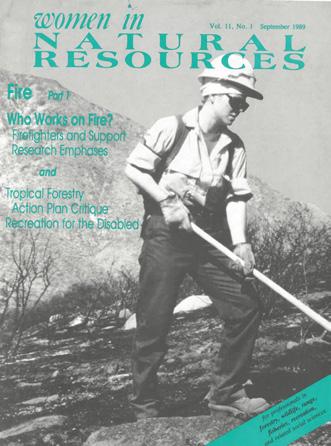

Beginning in Summer 2022, on behalf of the U of I Library’s Special Collections and with the gracious support of Gary E. and Carolyn J. Strong, English master’s student Flori Tulli tracked down historic WiNR materials and interviewed women who helped establish the journal. The purpose was to create accessible, physical and digital archives to document the role of these women leaders in helping to establish the professional practice of natural
This motto would echo throughout future volumes and later come to encompass women of all natural resource fields, including faculty, research staff and students from U of I and other institutions and private and public sectors from local to international levels. As they integrated more fields, the journal’s motto evolved to contain “for professionals in forestry, wildlife, range, fisheries, recreation and related fields.”
resource management in the United States and abroad.
Tulli, who specializes in environmental humanities, takes great pride in continuing the journal’s legacy.
“I want to really humanize it,” Tulli said. “I’m fortunate to have had the chance to speak with several of the journal’s leaders. I don’t want anyone or thing to be forgotten.”
Park Ranger Patsy Peralta on the cover of Vol. 5, No. 3, Fall 1983Dixie Ehrenreich, managing editor of WiNR from 1983 to 1999 and wife of deceased CNR Dean John Ehrenreich, was instrumental in hiring the first three women in CNR to receive tenure: Molly Stock, Jo Ellen Force and Lauren Fins.
Molly Stock, professor emerita of Forest Resources and contributing editor of WiNR, 1983-1987, submitted numerous articles, including “The First Wave,” a historical recount capturing the goals and experiences of women entering natural resource fields in the 1970s.
Jo Ellen Force was the first woman to be the head of the Department of Forest Resources from 1997-2013, later renamed the Department of
Forest, Rangeland and Fire Sciences in 2010. Force was also the first woman to head an accredited forestry B.S. degree in the country, and she handled public relations for the journal in the 1980s, finding and contacting many contributors through the Society of American Foresters.

“Our goal was to survive and to be successful professionals, even though we were women – that, somehow, we
one of many professionals who did not back down to adversity.
Denise Meridith, featured in the 15th Year Anniversary Edition of WiNR, was the first woman to serve as a Bureau of Land Management state director in Arizona. Denise was also the first African American woman to be in a leadership position in the Department of Interior.

Contributing editor Karen Lyman, alongside Lei Bammel, helped manage WiNR until 1998. Diana Apple, member of the Women in Land Management Agencies, WILMA, conducted many interviews, and Dean Zwight was the long-standing illustrator for the journal.
The journal continued to cover a broad scope of submissions including personal experiences, research, history, surveys, conference papers, art and poetry. By 2000, WiNR began publishing articles digitally. The journal ended in December 2013, leaving a 34year legacy of empowering the success of women in natural resources.

“I want there to be a story of the women who were connected to natural resources and the U of I so that we can emphasize their progress and see ourselves in their roles. Future generations will have accessible examples of minority leaders to look up to as they move forward,” Tulli said.
The WiNR archives are available for viewing in person in the U of I Library’s Special Collections in Moscow, or online at lib.uidaho.edu/digital/winr/.
could crack this culture. So, as women made milestones, something, we featured them in this magazine to say somebody made it. Or somebody did what I’d like to do someday,” said Force in an August 2022 interview with Flori Tulli.
Lauren Fins, professor emerita of Forest Genetics and the first woman to become director of the Inland Empire Tree Improvement Cooperative, was

Even though she attends classes online, Taylor Lawrence’s environmental education goes beyond the virtual.

For her environmental science master’s degree at U of I, Lawrence organized a project with Afghan women in Sacramento County, California. With the help of her Environmental Science advisor, Research Associate Professor Karla Eitel, Lawrence is using a hands-on approach to education to empower women in her own community.
“I think our biggest challenge with the climate crisis is the social component of it — creating social change in communities, governments and businesses,” Lawrence said.
Lawrence is using research methods like collaboration-based Participatory Action Research (PAR), a technique Lawrence learned in online CNR courses.
PAR seeks to shift the power dynamics in research from the researcher toward the community. The community leads the decision-making process for the research topic and methods, and researchers share results with the community.
Through this method, Lawrence is helping a team of 11 Afghan women conduct their own chosen research project: “Afghan Women Navigating Education in Sacramento County.” During Phase One of the project, the team met five times to establish this topic, focusing on identifying educational barriers and facilitators in Sacramento County.
The team of women will be enacting local changes that support the United Nation’s Sustainable Development Goal #4, “Quality Education,” which is to “ensure inclusive and equitable quality education and promote lifelong learning opportunities for all,” and Sustainable Development Goal #5, “Gender Equality,” which aims to achieve gender equality and empower all women and girls.
The team’s focus also supports the Health and Education solution proposed by Project Drawdown, which identifies Health and Education, specifically women’s education, as one of the top carbon reduction methods.
“It has disproportionately been white and often male voices that have been amplified in environmental circles,” Lawrence said. “It is vital that we diversify leadership if we are going to make lasting, equitable changes in the community and for our climate.”
According to Lawrence, all the decision-making power is in the hands of the women in the community.
“I try to provide the space, opportunity and research methods to help them research what’s important to them,” Lawrence said.
For Phase Two of the project, five women completed data collection and analyses of barriers and facilitators to education for Afghan women in the Sacramento community. The team is developing three local-level action recommendations, which are currently being implemented in the community. Creating shareable infographics on education topics identified as vital, yet hard to find accurate information on for Afghan women, including financial aid, community college opportunities, informal language learning options, career and degree support, how to work while attending school, and English-Second Language (ESL) classes and levels. Creating a women’s ESL group to meet with fluent English speakers to practice language skills in an activitybased, group approach, such as walks, baking, gardening and volunteering. Creating a women’s support group for discussion, providing peer academic and career support, and facilitating community support networks.
“In the women’s support group, I aim to imbue mindsets focused on pro-environmental impacts. The environment is linked to
Lawrence at the American River in Ancil Hoffman Park, Sacramento County, California, May 2022. Photo courtesy of Taylor Lawrence.basically every career path in my mind, and I believe that the health of the environment and society are intimately interconnected; the health of one can improve the health of the other,” Lawrence said.
Several team members hope to support women’s education in Afghanistan someday. As these women achieve their education goals, they have more opportunity to obtain leadership roles and further broaden their impact.
“I expect widespread ripple effects because the women are highly motivated to continue to help others on their educational journeys,” Lawrence said.
Even though she lives in Sacramento, Lawrence feels she has access to the support she needs because her professors are always readily available. “Their guidance has been instrumental for learning the group facilitation techniques, including PAR,” said Lawrence.
Lawrence familiarized herself with this technique in Eitel’s teaching and Professor Chloe Wardropper’s class, Research Methods in the Environmental Social Sciences. Her experience is just one among the growing numbers of online environmental science master’s students charting their own pathways.
“Once I began learning about inequalities of the climate crisis, I knew I wanted to have a bigger impact on my physical and
social community,” Lawrence said. “But there wasn’t a local school that worked with my education background and my future education goals. I found U of I among the top ranked online schools.”
U of I’s online environmental master’s degree is the best in the country for sustainability and environmental management, according to College Consensus.com and Public Service Degrees.org. The degree program is also ranked second by OnlineU.com and Online Master’s Degrees.org, and third by Intelligent.com.
“We’re attracting students from across the nation and the world, because the word is out that U of I faculty offer firstrate online courses, informed by their own research and scholarship,” said Lee Vierling, Director of the Environmental Science Program and Department Head of Natural Resources and Society.

From Fall 2020 to Fall 2021, graduate enrollment in CNR’s online, non-thesis master’s environmental science degree more than doubled, increasing from 47 to 101 students.
“The online program has given access to being out of state, while the environmental science department is robust and supports students in everything from classes to mental health,” Lawrence said.
“I’m thankful for how the department works with students like me that cannot be there in person.”
Vierling said CNR has created a flexible online platform that supports professionals looking to advance their career or change career directions toward the environmental fields.
“I began this master’s program with the intent of learning how I could have a more significant impact on my community and the climate crisis.
Merging my project with my Sacramento friends that I love and admire with the U of I community that I respect has been amazing,” Lawrence said.
Lawrence hopes the experience of this project will enable her to continue to engage with the local community by overlapping social and environmental topics.
“I am confident the team’s women will continue to have widespread impacts in their spheres of influence. They will carry the leadership and planning skills they developed during this project forward with them into their education, careers and community engagement activities,” Lawrence said.
Story by Kelsey Evans, CNR writer.
More than a quarter of Idaho’s growing 1.8 million population is new to the state, according to a U of I analysis that uses novel data. Census data confirmed last year that Idaho is the fastest growing state in the nation, but new research by Professor of Planning and Natural Resources Jaap Vos finds Idaho’s population and demographics have also drastically changed from a massive influx of new residents, paired with a steady departure of existing residents.
Jon Dixon’s job is literally to chase wascally wabbits, but he didn’t immediately dive into wildlife biology after high school. In 2020, he was working in finance but lost his job as COVID-19 rocked the country.
“I spent time gardening, raising chickens and being outside, and I realized I needed to make a change,” said Dixon, who was living in Moberly, Missouri. “I found out what a wildlife biologist was, and when I found U of I, I knew this was the place I needed to be.” While completing his classes for a wildlife resources major, Dixon attended a lecture by Distinguished Professor Lisette Waits, about her field projects, which have ranged from studying wolves to hellbender salamanders. He immediately volunteered for any project in her research portfolio, starting down a path toward what he calls the “coolest job ever,” a wildlife biologist. This led to his first meeting with a pygmy rabbit in January 2022.
Weighing no more than a pound, pygmy rabbits are the smallest rabbits in North America and are spread across many western states. The subset of pygmy rabbits that calls Washington’s Columbia Basin their home geographically separated from their fellow rabbits upward of 10,000 years ago. Agricultural development fragmented their natural habitat, decimating their population numbers. At one point, the population was down to 16 individuals. Today the endangered population is estimated at 75 individuals.
“We’re trying to breed these rabbits in outdoor enclosures and reintroduce them into the wild,” Dixon said. “My main goal is to monitor the population through DNA analysis.”
The senior collects scat from wild rabbits and tissue samples from the non-wild rabbits bred in the enclosures, which are set up throughout their native shrub land.
To capture the non-wild rabbits in the enclosures, Dixon can place live traps near burrows, safely nabbing the animals when they emerge to feed. Or the team can herd the rabbits toward net traps. “Although it works, it’s only a little easier than herding cats,” Dixon said. While the rabbits are in captivity, the team administers vaccines and a flea treatment, to help them stay healthy.
The team extracts DNA from the fecal and tissue samples, and using a process called PCR or polymerase chain reaction, creates a chemical photocopy of the DNA. Dixon analyzes the DNA to learn the rabbit’s sex and species – making sure he is looking at a pygmy rabbit instead of a cottontail or jackrabbit. The scientists also send the DNA to another laboratory for more precise analysis, which provides the entire genome for each animal — essentially a barcode for each rabbit.
From this data, the team can estimate population growth, sex ratios and survival rates of both the wild and non-wild rabbits, all information needed to resuscitate this population. Knowing where they gathered fecal pellet samples from the wild rabbits allows the scientists to track their movements.

“Our project monitors this population to make sure it is growing in a way that’s genetically diverse,” Dixon said. “This way they can be more resistant to environmental factors or disease so that in the long run, they'll make it. That’s really the goal — that they make it off to the Endangered Species List.”
Dixon will continue the pygmy rabbit project through graduation. After finishing his undergraduate courses, he hopes to earn a master’s degree and become a state biologist. For him, the dream job means being outside. “I love fieldwork,” Dixon said. “As hard as it is, even if it’s bad weather or you’re traveling over hard terrain, it’s just fun. It’s fun working up close with the animals. We’re getting to help them and that’s the coolest part.”
Article by Leigh Cooper, U of I Communications.
University of Idaho doctoral student Manuel Santiago is no stranger to the elusive neotropical otter. Through the support of global grants, stakeholders in Central America and U of I faculty, Manuel is building a lifelong dedication to conservation of the species by employing two novel sampling methods to study otter genetics, movement between rivers and how human activities impact dispersal patterns. Manuel collects genetic samples for feces along rivers to evaluate population size, density, home range, genetic diversity and gene flow.
The neotropical otter is distributed from northern Mexico to southern Argentina, including the Island of Trinidad, where Santiago is the first to conduct this genetic research. Manuel first worked with neotropical otters while earning his bachelor’s in ecology from Universidad Juárez Autónoma de Tabasco in México. He extended his research to Costa Rica while earning his Master of Science in management and conservation of tropical forest and biodiversity from Centro Agronómico Tropical de Investigación y Enseñanza. To further his dedication to the species, Manuel contacted Lisette Waits, wildlife resources professor, to expand his research methods, geography and community impact while obtaining his doctorate.
students judge the films. Every spring the community gathers to view, celebrate and award creativity in fish and wildlife filmmaking.
“We had so many great films in 2022, but one of my favorites was the student winner in the ‘wild side’ category: ‘Helping Animal Friends Across the Road.’ The film was developed by Canadian Indigenous youth of the Nakoda Audio Visual Club and highlighted the need for wildlife crossings for wildlife,” said Lisette Waits, professor and co-director of the FWFF.
While the pandemic brought challenges, the festival persevered with multiple virtual presentations in 2020 and 2021, hosted by both U of I and The Wildlife Society. 2022 brought an exciting return to in-person showings on-campus and at Moscow’s Kenworthy Theatre, and in September, the FWFF did the first “on the road” showing by partnering with the Ponderosa Center in McCall to present “Best of the Fest,” a showcase of award-winners from 2017-2022.
“The festival is quickly becoming an internationally known venue for sharing inspiring stories of fish and wildlife ecology and conservation. We hope it continues to excite and inspire the next generation of natural resource professionals,” Waits said.
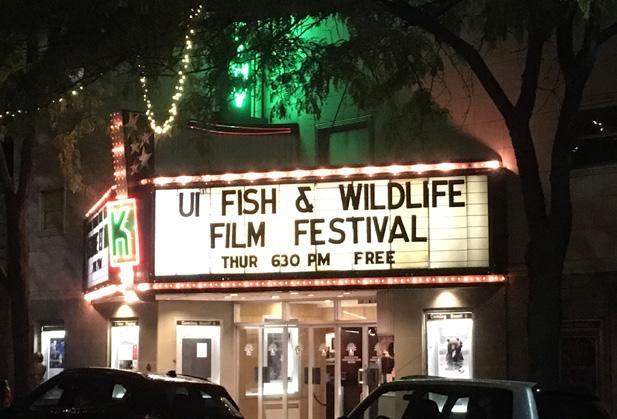
As a member of the International Union for Conservation and Nature/SSC Otter Specialist Group (IUCN/SSC OSG) and the Central America coordinator and representative for Costa Rica for the neotropical otter species, Manuel builds networks to preserve the species worldwide.

“So far, there are very few people in the Central American region working with the species,” Manuel said. “As the Central American coordinator and Costa Rican representative, I build collaborative networks between Central American researchers working with otters to expand the knowledge of this species in the region, linking the information generated from previous studies of this species in Mexico and South America.”
The Otter Specialist Group is committed to raising awareness of otter conservation through ongoing collaboration and holding international otter meetings to present and promote research for all 13 otter species among researchers, students and civil society.
The very first FWFF at the Kenworthy Performing Arts Center in Moscow, 2017.
Not everyone would turn to hemp as an environmentally friendly building insulation material, but that is just what CNR and the College of Art and Architecture, along with Ketchum-based company Hempitecture, are working toward.

The company needed reliable research on their hemp products, so it engaged CAA’s expertise in designing sustainable and energy-efficient buildings, and CNR’s knowledge of natural materials. Together, the team hopes to design a product that provides cost-effective building materials that help the environment by providing a low carbon alternative.
“Working at the IDL has really given me the opportunity to learn and work on different aspects of energy efficiency in buildings,” Schram said. “The experience has helped me understand how to better support builders to meet sustainability goals as well as given me a strong foundation to incorporate this knowledge in my future work as an architect.”
The Hempitecture project is an example of IDL’s collaborative nature. IDL students and staff come from engineering and architecture backgrounds. Damon Woods, IDL director, also seeks partnerships outside those fields to find the necessary expertise required by different projects.
For example, Woods approached CNR’s Professor Armando McDonald and Assistant Professor Lili Cai in the Department of Forest, Rangeland and Fire Sciences to collaborate in the research on hemp’s potential as insulation material.
McDonald’s team of experts in renewable materials is testing the product and comparing it to existing products in the industry, examining fire retardants, and even using technology to time the ignition and heat release of the product and the smoke emissions. For McDonald, research into sustainable products is crucial to mitigating the effects of climate change and to make a positive difference in Idaho’s communities.
Hempitecture is developing industry-standard insulation composed of hemp fibers. U of I was awarded a $200,000 Idaho Global Entrepreneurial Mission (IGEM) grant to conduct research on the development of their natural fiber insulation, HempWool. A CNR team is testing the fire resistance of the product while the CAA team at the Integrated Design Lab (IDL) determines the thermal properties of the insulation material.
Tyler Schram, who was a research assistant at the IDL and a CAA master’s student before graduating in Spring 2022, assisted on the thermal research project. He helped U of I at Boise research assistant, civil engineer and future Masters of architecture student Isabelle Boicourt test the material for thermal conductivity and create a physical model to show builders what the material looks like once it’s inside the walls.
The funding, from Idaho Global Entrepreneurial Mission (IGEM) grant program, has a “main focus to support industry and economic endeavors in Idaho,” McDonald said. “The impact goes beyond that. The business will positively impact local farmers by buying local hemp instead of transporting raw materials across the country. They minimize their carbon footprint by staying local. It will create jobs.”
In addition, hemp insulation helps the environment by encouraging builders to use natural fibers instead of petroleumbased products. And the hemp plants sequester carbon dioxide for the duration of the product’s life. “Sustainable products are key in mitigating climate change,” McDonald said.
Article by Maria Ortega, U of I Communications.
In June 2022, a team of nearly 40 volunteers worked together at the U of I Rinker Rock Creek Ranch for an annual three-day event, “The Monitoring Blitz.” The team was comprised of U of I faculty and students, and representatives from conservation non-profits, land trusts, state and federal agencies and other colleges. The Blitz is a multi-year study monitoring range conditions that is part of a larger initiative to develop a foundational understanding of rangeland conditions and how they change over time due to both natural and human-related factors.
Daria Paxton is as adept at the vibrato as she is with a drone. Her prowess on the violin stems from her days playing in ensembles and fiddle contests as a child in southwest Idaho, where her ambitions included a career as a musician. Her instrument, a maple Cremona with ebony fittings, put her on a path to a music degree at U of I, until the rubber soles of her hiking boots found a new trail: A dirtpacked path under a canopy of fir.
“I took a summer course in forestry at MOSS in McCall where we spent most of our days in the field learning about forest ecology, trees and forest management,” Paxton said. She and fellow U of I students dug deep holes to study roots, measured the height and girth of trees and learned about plants.
“Because of her music and art background, she has exceptional curiosity and insight,” said Mark Kimsey, assistant professor of forest resources and professor at MOSS while Paxton was there. Paxton’s worldview suddenly expanded from music halls to an outdoor amphitheater, and she switched majors. After graduating in Fall 2021 with a degree in forest management, Paxton moved on to graduate school at CNR studying forest soils.
The switch reached a crescendo thanks to a series of internships working on forests from central to northern Idaho. Paxton learned
Currently, land managers, researchers and agencies do not have a baseline of rangeland data available to support whether the conditions they are seeing are typical for western rangelands, or how rangelands respond to factors such as grazing, fire, drought or human activity like recreation.
By surveying 90 plots on a rotational basis, the team is building a database to meet this need. Volunteers survey the plots’ topography and identify plant species and their conditions.
Over time, the cumulative database of surveys will provide a foundational understanding of the conditions and evolution of Idaho’s rangeland, and it will help track the effects of management, human activities and environmental events on the landscape. It will be an essential resource for land managers to make informed decisions.
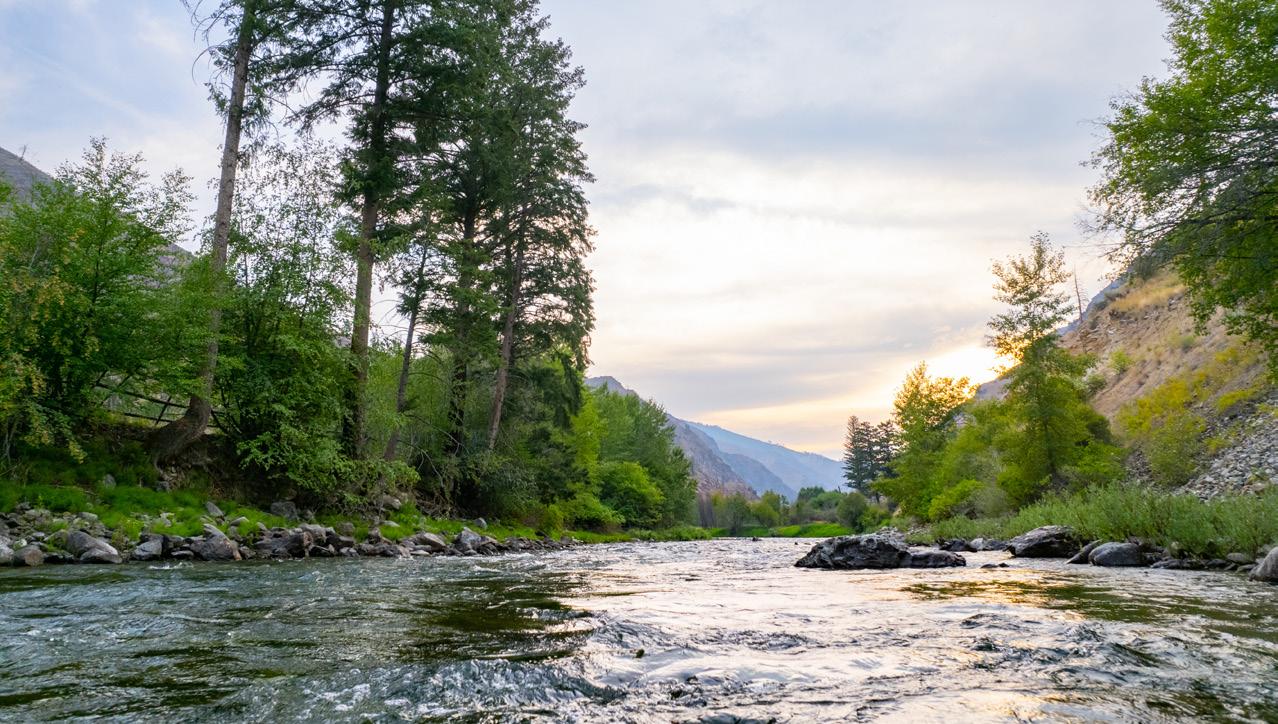
For the volunteers, the Monitoring Blitz is an exciting opportunity to participate in hands-on research. Faculty and agency staff have an opportunity to practice skills and plant identification in the field. Students are working alongside rangeland professionals while learning more about research on the factors influencing sage grouse survival, livestock weight gain and other issues germane to western rangelands. Whether a seasoned researcher, a conservation worker or an undergraduate student, the Monitoring Blitz creates a unique opportunity to learn something new and network with professionals in the field.
“The coolest part for me is that all the stakeholders and aspects of rangeland all come together to work on the same goal. It is so important because you get to connect with every aspect, which I don’t think most people get to do in their entire lifetime,” said Abby Dopp, a Rangeland Ecology undergraduate.

to grow trees meant to fuel the state’s timber industry and her resume includes working as a researcher for the Forest Policy Group, a U of I think tank that helps guide the state’s forestry plans.
As an intern with PotlatchDeltic, the state’s largest private forest landholder, Paxton tramped across clear cuts inspecting newly planted seedlings to see if rodents were impeding their growth. She recorded the effect of fertilizer on new trees and assisted with road layout, timber appraisal and cone collection. An immersion in drone technology led to a certificate as a drone pilot, giving her a catbird seat to one of the latest tools in forest management.
Flying drones over newly planted forest plantations allows foresters to evaluate tree growth, competition and seedling survival from the air, she said. It’s all part of what science foresters call silviculture.
As part of the field camp at MOSS, Paxton and fellow students visited logging sites, sawmills and spent a lot of time outside learning about forestry.
“She’s a very good student, top notch,” Kimsey said. “Because of her music and art background, she has exceptional curiosity and insight.”
“My family didn’t foresee my getting a degree in forestry,” she said. “When they saw everything that I have accomplished, they knew it was for me. I love forestry, and I’m good at it,” she said. “Once I learned that, I never looked back.”
Article by Ralph Bartholdt, U of I Communications.
In Spring 2023, Chris Zajchowski joins CNR
This is a unique role establishing an official partnership between CNR and the Idaho Department of Parks and Recreation. It is the third in the college that has a joint funding relationship with a public agency built in. Zajchowski’s work will help broaden U of I’s research efforts on outdoor recreation and park and protected area management.
Through splitting his position as CNR faculty and supporting Idaho Department of Parks and Recreation, Zajchowski will conduct research in state and national parks, as well as national forests and wildlife refuges, assisting with planning and management efforts. Understanding how visitors use lands and rivers for recreation and their responses to different management actions can help guide land managers in decisionmaking and developing resource management strategies.
“One of the things that attracted me to the U of I is the innovative work that the CNR is doing to partner academic positions with state agencies,” Zajchowski said. “This position is part of the mandate to assist Idaho’s 27 state parks in gathering and analyzing data or consulting on different park and recreation management or tourism needs. That is exceptional. That is what all states should be doing, and they’re not.”
Zajchowski also wants to utilize his role to develop professional pathways for students.
“Students who learn to assist an agency are more prepared for the workforce,” Zajchowski said. “We’re going to be exploring how we can support students and the agency in matchmaking and developing career skills.”
Zajchowski’s is joining U of I from Old Dominion University in Norfolk, Virginia. His work has thus far focused on outdoor recreation management and human dimensions of air quality. While working on his doctorate in parks, recreation, and tourism at University of Utah, Zajchowski studied how inversion-related weather conditions influence recreational activities. At the U of I, he will continue to serve as the lead investigator in a research collaborative with the National Park Service that supports 11 different park units in the Washington, D.C. area. He’s excited to build on these efforts and support U of I students and Idaho’s outdoor recreation resources.
Karla Eitel, professor and director of the McCall Field Campus (MFC) and McCall Outdoor Science School (MOSS) is collaborating on several projects related to U of I’s broader initiative to enhance educational collaborations with tribal communities. “I am excited about these projects as we rethink how we collaborate with tribes in education and research endeavors,” Eitel said.
In partnership with the Coeur d’Alene Tribe, the Nez Perce Tribe, and the Shoshone-Bannock Tribe of Idaho, and the San Carlos Apache Tribe of Arizona, the Cultivating Relationships project will create an online professional development certificate program to train educators and professionals to work with material that translates across communities. Topics include tribal sovereignty and self-determination, Indigenous ways of knowing, and frameworks for social and ecological systems. Teachers from school districts across Idaho will learn from and with tribal natural resources and education leaders. Their immersive summer experiences will be followed by a year-long online certificate program that will translate their summer learning into into classroom experiences. They will reflect, collaborate ideas with teachers, and receive feedback as they implement new ideas and curriculum throughout the school year.
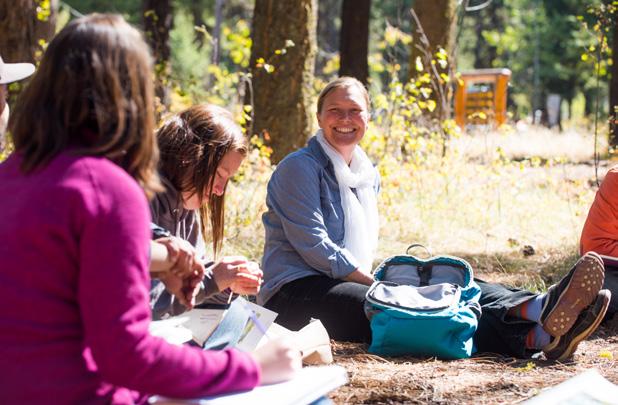
Also funded by the National Science Foundation (NSF), the Wéetespeme Stewardship Project, led by the Nez Perce Tribe, is engaging tribal students and young adults through internship opportunities for individualized restoration, conservation and
 faculty as assistant professor of Parks, Tourism and Recreation Ecology.
Article by Ren Lawson, Rangeland Communications.
faculty as assistant professor of Parks, Tourism and Recreation Ecology.
Article by Ren Lawson, Rangeland Communications.
climate adaptation planning. Students learn how to pursue something of interest to them in CNR while staying connected to their tribal community.
“Sometimes, students and young professionals often move away to earn their degree. This project helps them to understand how a college program can connect to their tribe’s values, and to build skills that lead them back to meaningful work in their home communities,” Eitel said.
Through the support of a separate grant, the NSF-Mid Career Advancement Grant, Eitel has been able to balance her leadership responsibilities as director at MFC while also advancing her research centered on equitable STEM practices. With the grant and a supportive team, Eitel has had “more time to dive into the literature and form new research methods for centering equity.” Eitel is assisted by a team effort at MFC that includes two graduate students, Karly Foster and Hannah Pasek, as well as two program coordinators, Beth Kochevar and Leslie Dorsey, who are overseeing the graduate students’ practicum. Together, they are changing how they frame field science curriculums by applying a student-centered approach that builds on K-12 students’ lived experiences, backgrounds and cultural identities.
The research aims to shift the idea that educators are the source of all knowledge, to instead embrace a collaborative effort in which students lead their own questions and observations based on their individual curiosities and experiences. It recognizes that students come with a broad array of experiences within their upbringing and their communities that are assets in a learning environment, making space for students to imprace their identies. “We’re not the holders of all knowledge. Students have the power to draw on their own assets and communities,” Eitel said.
Other practices include recognizing multiple modes of discourse, multiple ways of knowing, and establishing a sense of “rightful presence” where students feel that they can fully be who they are while at MOSS.
To understand how MOSS graduate students are comprehending these practices, the research team will guide students in a process called collaborative auto-ethnography. The research question centers on how, and in what ways, graduate students understand and implement equitable learning approaches. This way, Eitel is shifting powers to students in the research dynamic as students implement and reflect on these equitable practices to understand common difficulties and successes.
“Through reflection, students will grow as educators in addition to publishing collaborative pedagogical research that will be of benefit to similar educational programs across the world,” Eitel said.
Article by Kelsey Evans, CNR Writer.
Leda Kobziar, U of I associate professor in wildland fire science, is explaining how the new scientific field of pyroaerobiology explores living microorganisms found in plumes of wildfire smoke.
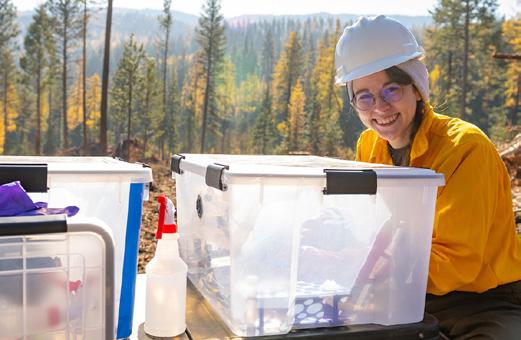
In collaboration with scientists at the University of Florida and Colorado School of Mines, Kobziar’s U of I team, which includes undergraduate, graduate and postdoctoral students, researches the ecological and pathological repercussions of airborne bacteria and fungi hurled into the atmosphere during wildfires. Her group found more than a thousand different organisms surfing the smoke waves. The next step, said Kobziar, is to determine how long microorganisms can live in the smoke, how far they can travel, and their effect on natural systems.
Because pyroaerobiology is so new, Kobziar’s team is constantly developing novel ways to collect microbes from smoke. Phinehas Lampman, a doctoral student, drone pilot and former firefighter who grew up in Headquarters, Idaho, modifies drones using aluminum bar stock to attach small pumps and tubes. The mechanisms suck wildfire smoke through filters where the airborne fungi and bacteria can be collected.
“There aren’t any established ways to do any of this,” Lampman said. “We’re always coming up with new or better methods to conduct experiments, and that’s what makes it so interesting.”
So far, Kobziar and colleagues have discovered that over 80% of the microbes in smoke samples collected from burning forests in Florida were alive. Additional samples collected with drones from extremely
intense fires in the Rocky Mountain West found 60% of microbes had survived the intense heat of the smokey highway.
She estimates that 40 trillion to more than 100 trillion microbes are released into the atmosphere for every 2.5 acres burned in low- to mid-intensity fires. “This means that larger fires would be predicted to mobilize even larger numbers of microbes,” Kobziar said.
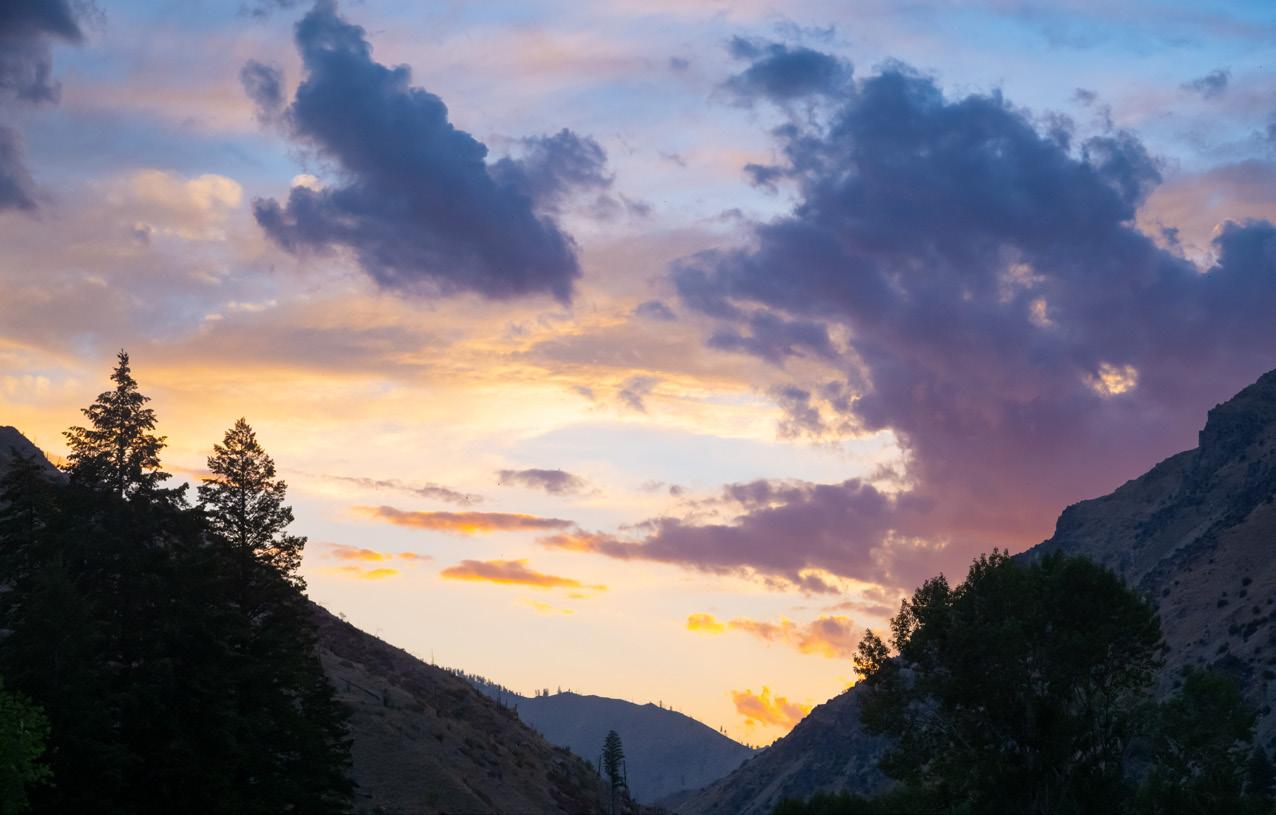


The National Science Foundation Louis Stokes Alliances for Minority Participation (NSF-LSAMP) Bridge to Doctorate fellowship program, in partnership with the All-Nations LSAMP program, provides funding for Native American doctoral students in STEM fields. Students in the program integrate traditional ecological knowledge and Indigenous ways of seeing science and the environment into their studies.
“We have 12 exceptional students in U of I’s program, and many are dedicated to Natural Resources. They are interested in everything from wildlife ecology to climate change and volcanology,” said Jerry McMurtry, dean of the College of Graduate Studies.
Dalyna Hannah, of the Navajo Nation in Ramah, New Mexico, is working with Professor Charles Goebel to study methods for improving mortality rates for different tree species that have a cultural aspect to the Indigenous community. Hannah aims to understand not only the mortality but also the phenology and resiliency of each tree species.
Jeffrey Ross is Anishinaabe (Ojibway) from Northwest Angle #33 First Nation in Ontario, Canada. He is working with Greg Latta, associate research professor in the Department of Natural Resources and Society, to research carbon insetting as an investment opportunity for corporations. Carbon insetting allows corporations to reduce and mitigate greenhouse gas emissions in supply chains to move toward goals of net-zero emissions while providing measurable environmental and socioeconomic benefits to local and Indigenous communities.
“This past year, I was selected for both the National Forest Foundation’s (NFF) Conservation Connect Fellowship and the Yale University’s Environmental Fellowship Programs. With the

NFF, I was involved with a project that sought to develop a forest carbon accounting methodology and forest carbon policy for Nation Forest System lands. As a Yale Environmental Fellow, I worked with the Wildlife Conservation Society in the Bronx, New York, where I conducted a meta-analysis of peer-reviewed literature that addresses a variety of biophysical, socioeconomic and governance criteria to identify well-designed and well-managed protected areas,” Ross said.
Hannah Funke, from the Flathead Reservation in northwest Montana, received her Bachelor of Arts in forestry with an emphasis in wildfire management from Salish Kootenai College. Funke is now studying how wildfire impacts growth and mortality of plants that have cultural importance to the Kootenai Tribes for her doctorate in fire ecology. Funke strives to find a middle ground between Indigenous knowledge and Western science.
“Natives have used fire for management for thousands of years, but an unhealthy balance following European settlement and the 1910 fires have led to uncharacteristic and catastrophic fires today,” Funke said. “Fire is not an enemy. People’s arrogance is.”
Funke and her fellow Bridge to Doctorate scholars are especially appreciative of their mentees’ openness. She credits Alistar Smith, professor of wildland fire science, for helping her pursue her Native American roots as a way of thought and learning.
“The program’s mentorship has made the transition from a small tribal college to a large university less intimidating,” Funke said.
Other CNR Bridge to Doctoral students include Kassandra Townsend
work with the first foods of the Yakama people, such as the roots camas and yampah, to help preserve her tribe’s culture.
“Everyone has a compelling story,” McMurtry concluded. “We hope to renew our NSF award next November so we can support additional exceptional Indigenous students.”
Article by Kelsey Evans, CNR Writer.
Vos analyzed vehicle registration and license surrender data from the Idaho Transportation Department from 2011-2021, finding nearly a half million Idaho residents moved to the state in the past decade. The state’s total population grew by 271,449 people, when accounting for the 295,000 residents who moved out of the state.
“We’re not in the middle of nowhere anymore,” said Vos. “We’re in the middle of all the action. If you look at the numbers, you can see we are getting new people coming in constantly, but we should also look at how many people are leaving.”
Vos hopes his research spurs communities and planners to talk about demographic change, not just growth. Rapid demographic change influences political views, resident income sources and financial interest in the state from national real estate developers, manufacturing and other industries.
Vos found the high rate of migration to Idaho that has steadily risen since at least 2011 has coincided with increasing rates of Idaho residents migrating elsewhere, resulting in reshaped Idaho communities. In 2022, Vos found an average of 180 people move into Idaho daily while 137 state residents move out of state.
Phoenix Aguilar McFarlane learned about the University of Idaho’s Doris Duke Conservation Scholar Program from a flier tacked to a bulletin board on the Moscow campus. She realized it could lead to the outdoor career she desired. Months later, McFarlane, along with six other Doris Duke scholars, joined a field research team studying ground squirrels in Bear, ID, in a remote stretch of the Snake River west of New Meadows and McCall.
The mixed forest and grasslands near the pine-fringed community of Bear ideally suits northern Idaho ground squirrels, a threatened species found in only two Gem State counties.
Thanks to the Doris Duke program, McFarlane was at the forefront of research seeking to prevent the rodent’s dive into extinction.
“I realized that I really love wildlife research,” she said. “This experience showed me that field work is the foundation of the kind of science I want to pursue.”
The scholars program, funded by the Doris Duke Charitable Foundation, provides students with a broad array of professional skill development opportunities in biodiversity conservation. As part of the program administered by Kerri Vierling from Fish and Wildlife Sciences and Courtney

“While the census already shows we are one of the fastest growing states, the actual demographic changes are much more dramatic, and I believe this change is what most people are noticing,” he said. “The census data provides population numbers, but it hides the dynamics of change.”
Vos found Idaho’s urban communities in Ada County, home to Boise, have become a new home for departing residents of California population centers, while Coeur d’Alene has become a hotspot for people departing from northern California and Washington. Similarly, the East Idaho cities of Pocatello and Idaho Falls area are seeing more people from neighboring Utah moving in.
Idaho’s young adults (21-30) are moving out of the state at rates higher than any other age group, while youth in the same age group are entering Idaho at rates higher than other age groups, Vos’s analysis shows. Idaho residents ages 31-40 tend to stay in Idaho and their total population has risen. Overall, people moving into Idaho are largely in their 20s, 30s and 50s, Vos found.
The research uses drivers’ license data to offer a localized view into Idaho’s evolving rural communities that avoids the data reliability issues present in census data. The U.S. Census Bureau has not released data from 2020 headcounts. Vos said the annual census estimates are often unreliable in rural areas.
All new Idaho residents must surrender their previous driver’s licenses within 90 days of moving. New residents must also register their vehicle at their new address. Vos said those rules allow for real-time analysis into Idaho’s changing demographics.
Conway in the U of I’s Cooperative Fish and Wildlife Research Unit, scholars learn field techniques, develop research and presentation skills, attend workshops and conferences, and build a network of professional contacts.
“I never knew I was interested in wildlife work until I had this experience,” McFarlane said.
The two-year conservation scholarships are awarded annually to undergraduate and graduate students from groups underrepresented in environmental fields, such as women, minorities and first-generation college students.
The scholarship pays recipients for two summers of fieldwork, like studying ground squirrels in Idaho. During the second summer, students are encouraged to work for state or federal agencies from Hawaii to Maine.
Anne Yen, who joined the program as a graduate student and Doris Duke mentor after working as a researcher and science illustrator painting plants and wildlife for posters and books, said working with the scholars is its own reward.
“I spent years looking for a suitable graduate school program and when I read about Doris Duke and U of I, I knew it was meant for me,” said Yen, who grew up in Detroit. “The program is tailored to underrepresented students in the fish and wildlife field, and I am not only a person of color, but I am also a non-traditional student. I was much older than my fellow graduate students.”
In addition to meeting with other scholars every other week, Yen is working toward a doctorate studying nesting behavior of Western grebes. She wants to unlock why reproduction rates in Idaho are low. The grebe research is exciting, but mentoring the undergraduates brings an equal dose of accomplishment.
“They are fresh, idealistic and energetic,” she said. “They are on a journey, and they inspire me.”
a first-generation American whose business-owning parents immigrated to the valley from Mexico, didn’t spend a lot of time outside with her family.
“My mom and dad were always working, and when I was in high school, I started a job, too,” Contreras said. “It was very important for them that their children establish a strong work ethic.”
When she decided to attend college, her parents were supportive. She would be the first family member to pursue a college degree, they hoped, in a traditional field of study.
“They thought I should be a nurse or a lawyer,” Contreras said. Her path took a turn when a counselor at the community college where Contreras prepared for a nursing career encouraged her to apply to the Doris Duke program at U of I. “I wasn’t that interested in nursing, but I liked science and I liked field work,” Contreras said.
She had studied mosquitos as a vector species during a semester abroad and after being accepted to the Doris Duke program, Contreras found herself in the western Idaho forests and rangelands with other scholars studying ground squirrels. Her research explored the relationship of soil type to burrow locations, and Contreras presented the work at a biology research symposium. Watching her early success as a researcher, her parents warmed to Contreras’ new direction.
“At first they didn’t understand how I could make a career by studying animals,” she said. “Now they realize what wildlife biologists do, and that the work is important.”
One of the advantages the Doris Duke program affords its scholars is the many opportunities to meet and make connections with fellow researchers and biologists. Contreras spent Summer 2022 at the Coastal Islands National Wildlife Refuge in Maine to complete her two years in the program. After that, she wants to pursue a master’s in wildlife biology.
“My goal this summer is to network and to continue to immerse myself in this community,” she said.
The inspiration to continue studying and researching is among the catalysts of the Doris Duke program, said Kassandra Townsend, a former Doris Duke scholar from Nampa, member of the Pueblo Tribe, and graduate student and administrative assistant at U of I’s Experimental Forest.
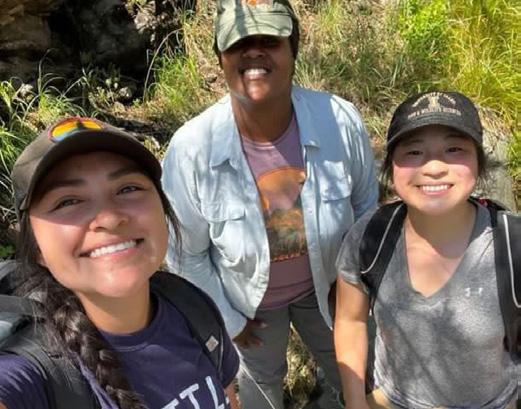
Townsend joined the Doris Duke program and worked as a mentor after graduating with her bachelor’s in ecology and conservation biology from the U of I. The scholarship program, Townsend said, evoked a love for the outdoors and wildlife research. The network she built via the program put her on track to pursue a doctorate in wildlife ecology studying owls in Arizona.
“It kind of hands you opportunities,” Townsend said. “Because it’s a two-year program, it relieves you of the stress of having to find internships, build contacts and find summer jobs.”
The university’s Doris Duke program is made possible through a collaboration between CNR and the USGS Cooperative Unit. The initiative is led by professors Kerri Vierling and Courtney Conway. Article by Ralph Bartholdt, U of I Communications.
Photos courtesy of the U of I Doris Duke Conservation Scholars Program (DDCSP) Collaborative.
Growing up in the Sawtooth National Forest in Hailey might seem like the ideal place for a teenager like Christina Contreras to pursue outdoor activities. Minutes away are ski resorts, hiking and mountain biking trails, and some of Idaho’s best fly-fishing streams. Although the Wood River Valley is an outdoor paradise, Contreras,

“He is developing and testing sampling, collection and storage methods for otter feces. I’ve sampled several species before, but otters are especially difficult, with genetic individual identification success rates of only 10 to 20%,” Waits said.
Meanwhile, the success rate for many other species such as canids, felids, or bears is around 50 to 70%. Conservation groups must have more knowledge and access to appropriate genetic sampling methods for otters to increase success rates and expand genetic analysis throughout the range of the species.
In tropical countries, otter feces are exposed to heavy rain, warm temperatures and high humidity, which can increase DNA degradation. Manuel is employing and comparing two novel collection and storage methods that include DET buffers and swabbing protocol to discover how to best preserve DNA in certain tropical environments.
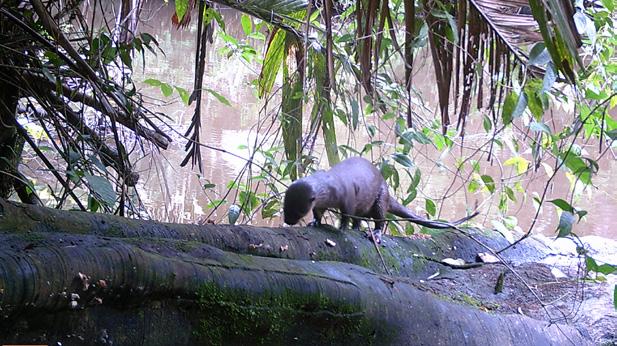
“Due to elusive behavior, neotropical otters are very difficult to observe and monitor in the wild. Sometimes the only signs of presence are their feces, which are usually collected to analyze diet,” Manuel said. “By swabbing the outside of the feces for DNA instead, we can collect cells directly from the otters to know more about their secretive life — not just information from what they ate.”
Education efforts are essential to the future conservation of the species. “We aim to inspire the next generation to learn about these spectacular otters and to go on to protect the environment,” Waits said. The Tirimbina Biological Reserve is one of several partners, because they have all the pieces for conservation education. “They are a research station and a community organization with the necessary local connections to incorporate environmental education,” Manuel said.
The Tirimbina Biological Reserve works with Tirimbina school on different recycling projects, and the Reserve is currently growing its environmental programs to incorporate other schools. Manuel plans to keep developing educational programs for the Tirimbina school and many other schools in the future, and he dreams of returning to Mexico as a professor to train the next generation of professionals in natural resources. Manuel hopes to encourage his future students to pursue education outside of Mexico, as he did. “Students must take advantage of as many opportunities as possible,” Manuel said. They will not only learn about new cultures and customs but also find new ways to preserve nature locally and worldwide.”
Article by Kelsey Evans, CNR writer.
Hello CNR community! My name is Stephanie Perez, and I have recently joined the college as the assistant director of development. I am a two-time Vandal alum who is passionate about the U of I, helping all students in their pursuit of a college degree and connecting with other alumni!
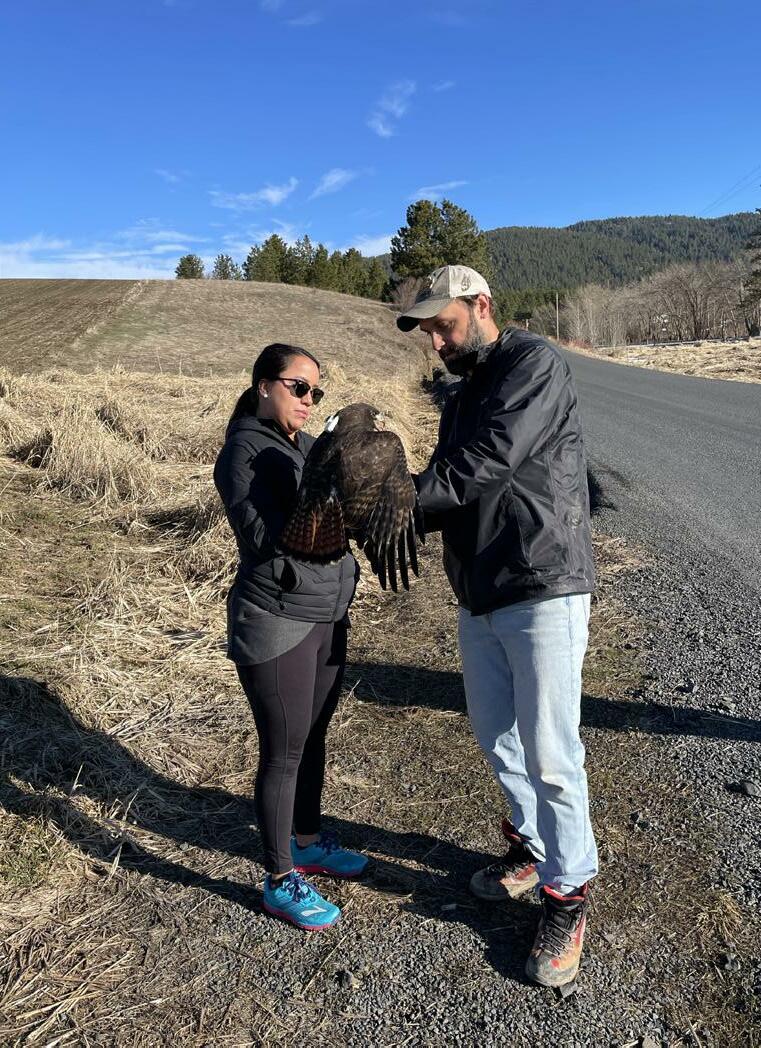
My role in CNR is supporting alumni and donors who are just starting to learn about the power of philanthropy and are interested in supporting student scholarships with annual gifts or by setting up an endowment. As a firstgeneration Vandal myself, access to
scholarships was a huge factor in my being able to afford an education. Without the support of our donors, my educational successes may not have been realized.
I will be traveling far and wide this year and would love to get to know you and hear about your experiences with U of I and/or CNR. Whether we have the chance to meet in person, or connect by email, phone or at future events, I am eager to speak with you and learn about your passions and philanthropy interests – every gift, of any size, makes a difference!
Go Vandals!
For Students. For Idaho. For the World.
andals dare to think bold. Not kind of bold, but transformative, world-changing BOLD. We see a BRAVE. BOLD. future in which Idaho’s next generation of UNSTOPPABLE leaders forge paths for others to follow, drive sustainable solutions and take on any challenge to create a prosperous and thriving future.
The College of Natural Resources has set our campaign goal at $27.5 million over the span of the entire campaign (2015 to 2025) and we have already raised $17 million. We are well on our way, thanks to our many alumni, donors and supporters! Over the final three years of the campaign, we will be focusing on endowed faculty positions and joint positions with external agencies, completing our McCall Field Campus initiative with a few new buildings, increasing our forest enterprise management efforts, and, as always, increasing scholarships for students to make a U of I education as accessible as possible.

You can make this vision a reality because, together, we are Brave, we are Bold and we are Unstoppable. For students, for Idaho and for the world.
I look forward to the years ahead as we realize our goals together!
Mary Ellen Brewick Director of Development, College of Natural ResourcesThis school year, McCall Outdoor Science School’s (MOSS) at McCall Field Campus is prioritizing geographic and cultural diversity of students from schools that haven’t previously been served.


“It is exciting to have a full, expanding outreach schedule following limitations and pandemic restrictions in the past,” said Beth Kochevar, K-12 residential and outreach programs coordinator.
For example, in summer 2022, Adventure Day Camp Programming served twice as many students – around 2,500 from all parts of Idaho, all of whom received scholarships.

CNR is broadening outreach to recruit a more diverse body of students on all fronts.“We’re trying to expand our reach and geographic diversity,” said Director of Recruitment and Stakeholder Engagement and CNR alum Mindy McAllister.
This year, CNR has had a strong presence at the annual National, Washington and Idaho Future Farmers of America (FFA) conferences. CNR hosted Forestry, Environment and Natural Resources and Rangelands FFA Career Development Events as well. U of I’s campus also regularly hosts the state’s 4-H leadership conference and participates in the Idaho Department of Land’s state forestry competition.
“This is not an inclusive list, but it shows our growing influence as we physically meet students where they’re at,” McAllister said.
Students at MOSS.
Throughout CNR, we extend gratitude to our many contributors for MOSS and other initiatives, and we celebrate individuals including Kochevar and MOSS’ new program coordinator, Dylan Porter, who are focusing on program development and grant writing.

“Teamwork enhances our ability to offer new opportunities and expand our vision into the future,” Kochevar said.
CNR aims to further expand access by guiding students to the college’s new workforce training associate degrees to provide essential credentials for sustainable jobs.
“These career development events are made possible by the generosity of industry partners and private donors,” said Mary Ellen Brewick, CNR director of development. “We are thankful to the CNR community for helping us meet students where they are.”
Frances Cassirer, Idaho Fish and Game senior wildlife research biologist and Fish and Wildlife Sciences alum, was named the 2022 recipient of the Wild Sheep Foundation’s Statesman Award.
“Frances is a leader among our state and regional partners, and her research is cutting edge,” said Idaho Wild Sheep Foundation President Bill London. “She has the respect and admiration of our partners and is seen as an individual who is an expert in the field of bighorn sheep research and management.”
Thad Berrett, (B.S., Range Livestock Management ’04) was selected to serve as the new Powder River District Ranger of the Bighorn National Forest in Buffalo, Wyo. He spent the last seven years on the district managing the range program as a rangeland management specialist.
Lindsey Rush, who recently earned a Master of Science from the Department of Fish and Wildlife Sciences, received the Randall Smith Emerging Leader Award from the Idaho Chapter of the Wildlife Society.
Dave White (M.S., Resource Recreation and Tourism ’98) was appointed Associate Vice President of Research Advancement at Arizona State University. In this capacity, he advances research strategy and priorities for the Julie Ann Wrigley Global Futures Laboratory, which is dedicated to shaping a future in which life thrives on a healthy planet. White is also the director of the Global Institute of Sustainability and Innovation, where he coordinates ASU research centers to advance use-inspired science for the betterment of the planet.
“It happens often that someone says, ‘Oh, I love your hat. Where did it come from?’ I turn it around and show the text on the back, which says College of Natural Resources,” Patterson said. A simple cap has given him the “opportunity to talk about U of I and CNR to many people.”
A New Jersey native, Rich Patterson graduated from U of I with a degree in fishery management in 1971. Following three years as a fishery biologist in Alaska, he completed a year of graduate study in communications at the University of Northern Colorado.

He has worked for the U.S. Fish and Wildlife Service, the Alaska Department of Fish and Game, and the U.S. Forest Service and was honorably discharged from the U.S. Army. He served as director

of the Dillon Nature Center and was director of the Indian Creek Nature Center from 1978-2013 where he pioneered techniques of environmental education and ecological restoration. He is a seasoned fundraiser and financial manager, and he has written hundreds of articles on fishing, hunting, nature study and travel.
Patterson is also a founder of the Association of Nature Center Administrators and past president of the Outdoor Writers Association of America. In 2002 he was inducted into the National Circle of Conservation Chiefs, and he has received the Theodore Roosevelt Conservation Award (’91), the National Leadership Award from the Association of Nature Center Administrators and the Bridge Builder Award from the Cedar Rapids Community Foundation (’07), and the Aldo Leopold Award from the Garden Clubs of America (’09).
Patterson and his wife, Marion, live in Cedar Rapids, Iowa and have two grown children, one of whom (Nancy) is also a CNR graduate. She works for the Bureau of Land Management in Alaska.
Corsi (B.S., Fisheries Management) retired in June after 42 years of employment, 15 of which he served as Idaho Department of Fish and Game’s Panhandle regional director. Corsi remembers how the 1990’s Clark Fork Settlement Agreement to relicense two dams on the Clark Fork River had the blessing of 27 tribal, state and environmental groups. It was just one of Corsi’s notable communication tasks as an environmental biologist.
In a more recent project, Corsi and IDFG worked with Idaho Transportation Department to make the U.S. 95 highway corridor safer for drivers and wildlife through the McArthur Lake Wildlife Management Area south of Bonners Ferry. Prior to his work with IDFG, Corsi dedicated over 20 years of service to fisheries management and research and fish and wildlife habitat conservation in the Coeur d’Alene basin. PProfessionally, he takes great satisfaction from working collaboratively with stakeholders
to find solutions to natural resource challenges, as well as generally making the world better for fish, wildlife and people.
Ernie Brannon, Fish and Wildlife professor emeritus and former director of the Aquaculture Research Institute, passed away on March 9, 2022. Ernie is survived by his wife Charlene Martinsen Brannon, a former professor in the food science department at the University of Washington.

From Port Angeles, Washington, Brannon began his career in fish biology in 1953. Brannon started as director of the newly established Aquaculture Research Institute (ARI) in 1988 and became a tenured professor in the Department of Fish and Wildlife where he taught and carried out research for 14 years.
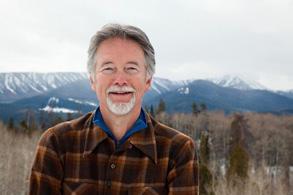
Karen Ehrenreich Lyman, (Forestry B.S., 1978) died December 23, 2021 at her home in Clarkston, Washington. In 1973 she was a freshman in the first, good-sized enrollment of women at CNR who knew they could prove themselves in natural resources professions. Her father, John H. Ehrenreich, Sr. was Dean of the College of Natural Resources at that time. She began work after graduation for Boise Cascade, then moved on to Champion International. After that, tiny Round Top, Idaho, was called home when she worked for the USDA Forest Service. Two private companies followed: Idaho Trading Company based in Moscow, and then the Rainwater Ranch in Dayton, Washington. During most of her career, , and editing other submissions for publication.
While working in Dayton, Washington, she met and married Jay Lyman in 1986. He was a grain farmer, born and raised there. Jay died in 2005, and Karen then focused on raising her children. She is survived by her son and two daughters: Thomas, Grace, and Claire, her brother John H. Ehrenreich, Jr., and her mother, Dixie L. Ehrenreich. She helped blaze the trail for women who wanted to work in male-dominated natural resources, and inspired many women along the way.
Judy Guse-Noritake, 68, (M.S., Wildland Recreation Management, ’91) passed on June 1, 2022. She is remembered for her extensive work in conservation and civic activism on a local and national level. She and her husband Rae lived in Alexandria, Virginia. where she was a strong advocate for better park spaces and amenities in mixed-income neighborhoods. She served on the Alexandria Parks and Recreation Commission for nearly 20 years, leaving behind a rich impact and legacy on her community. Through her work, she lived out her belief that the natural and developed world should be intimately related, and that preservation of the natural world is foundational to responsible development and healthy communities.
Richard “Dick” L. Powers, 79, (B.A. Forestry, ’64) passed away in Salmon, Oct. 22, 2021. He is remembered as an active forester, family man and outdoorsman. Dick grew up in Salmon and McCall, where spent his time fishing and enjoying the outdoors. After graduating from U of I, he began his career with the U.S. Forest Service in Montana and Alaska. He worked as a District Ranger and Area Manager, which led him to earn a Master of Public Administration. After more than a decade of service with the USFS, Dick went on to open the Whaler’s Cove Lodge near Angoon, Alaska, until he sold the business to his son and returned to Salmon in 2017.
Howard Quigley, 70, passed Sept. 4, 2022. He was a distinguished wildlife biologist and alumni of the Fish and Wildlife Sciences program. He served as Panthera’s Conservation Science executive director and Jaguar Program director. Previously, he served as director of Panthera’s Puma Program; executive director of Craighead Beringia South; president of the University of Idaho’s Hornocker Wildlife Institute; and Global Carnivore Program director
at the Wildlife Conservation Society. Throughout his career, Quigley’s research and conservation actions focused on wild cat habitat use, conflict mitigation, predator-prey and human-cat interactions, community conservation education, and conservation and landscape planning.
In the Tetons, Quigley’s conducted 16 years of cooperative research and conservation of pumas with the Teton Cougar Project. Siberian tigers in the Russian Far East, giant pandas in China, and black bears in the U.S. were just a few of the many other species to which Howard also dedicated his conservation efforts. From Belize to Brazil, he inspired others to devote their careers to saving wild cats, and he brought good nature and humor to every occasion. In spring 2020, he returned to CNR to interact with students and give a seminar in the Fish and Wildlife Sciences program.
Leon Neuenschwander, 75, professor emeritus of Fire Ecology, passed on June 1, 2022. He and his students had a significant impact on the fire world, bringing new standards and technology to the industry, such as applied ecology and remote sensing and GIS in fire management. Neuenschwander helped establish U of I’s Fire Ecology program, building it into one of the most reputable programs in the country. He authored over 31 books, through his innovative approach and work with state and federal policymakers, his work has impacted fire management policies and practices nationwide.
Lee also had a colorful side. He received the CNR “Boot in the Butt” award as many times as any other faculty in the college and he had campfire stories plentiful. Lee served in the U.S. Air Force before coming to the University of Idaho in 1975. Upon retirement in 2002, he and his wife, Betty, moved to their ranch near Pueblo, Colorado, where they raised horses and developed habitats for wildlife.
Karel Stoszek, 86, U of I Forestry professor emeritus, passed away on Sept. 3, 2021. Stoszek is remembered fondly as a silviculture teacher, storyteller and passionate lecturer. Born in Argentina, Stoszek moved to the Czech/Polish border at the start of World War II. In 1959, he graduated from the Brno School of Forestry and worked as a forest management planner. Stoszek and his wife eventually moved to Austria and later found their way to the U.S. as refugees. Once he learned English, he became a graduate student at Oregon State University and completed his doctorate in entomology with a minor in silviculture and plant ecology. Stoszek was deeply passionate about sustainable forestry and was an animated lecturer who mentored many students. Stoszek had a revolutionary approach to forestry management in his time, encouraging students to frame forestry within the context of natural ecosystem functions. Though many of his views contradicted the popular views of the day, many are now considered are now considered foundational. After he retired from teaching in 1991, he devoted himself to his passions as an outdoorsman.
n Virginia Anderson, McCall Field Campus Kitchen Assistant
n Ryer Becker, Forest Operations Research Faculty
n Ebru Bilici, Forest Utilization Research, Senior Research Associate
n Jacob Brewer, Administrative Financial Specialist
n Joseph Christensen, Fiscal Operations Manager
n Lana Cohen, FRFS Research Associate I
n Ed Flathers, FRFS Postdoctoral Fellow

n Matthan Hale, Nursery Management Specialist
n Amy Huck, Grants and Contracts Senior Budget Specialist
n Shannon Kieran, FWS Research Scientist I
n Ren Lawson, Communications Manager, Rangeland Center
n Fernanda Gomes Moojen, NRS Postdoctoral Fellow
Ming-Hsun Cheng is a new assistant professor of Energy and Environment based in Idaho Falls. Cheng specializes in sustainable biorefinery systems design for biofuels conversion and bioproducts innovation. Cheng aims to integrate renewable materials with green technologies to develop biomass-to-bioproduct pipelines across the natural resource-energy-environmenteconomic nexus in this new role.
OUTSTANDING SENIOR STUDENTS
OUTSTANDING GRADUATE STUDENTS

n Fish and Wildlife Sciences: Luke Oliver
n Natural Resources & Society: Natalie Redmond
n Environmental Science: Kayla Bordelon
n Master of Natural Resources: Matthew Steinwurtzel
n David Navarro, FWS Research Specialist
n Stephanie Perez, Assistant Director of Development
n Muhammed Jaslam Poolakkal, FRFS Postdoctoral Fellow
n Dylan Porter, McCall Outdoor Science School Program Coordinator
n Bruce Ripley, Forestry Chief Innovation Officer
n Adam Schmoeger, McCall Field Campus Superintendent
n Kathryn Sliwa, FW Coop Research Associate II
n Aaron Sparks, FRFS Research Faculty
n Benjamin Spei, FRFS Postdoctoral Fellow
n Cody Tisdale, FW Coop Research Associate II
n Logan Wimme, FRFS Research Associate I
n Environmental Science: Julianna Martin
28 | WINTER 2022 - 23
The Unit celebrates 75 years in September 2022.
Chad Bishop (U of I M.S. Wildlife Resources ‘98 and director of Wildlife Biology at University of Montana)
Natalia Estrada-Carmona (U of I Ph.D Natural Resources and Associate Scientist with the Alliance of Bioversity International and the International Center for Tropical Agriculture)
Roger Hungford (U of I B.S. Range Management ’63 and M.S. ‘74 and 39-year employee with the U. S. Department of Agriculture)

Bruce Rieman (U of I B.S., M.S. and Ph.D degrees, fish biologist and aquatic ecologist)

Shawn Keough (executive director of the Associated Logging Contractors and Idaho State Senator from 1996 to 2018)
Yolanda Bisbee (U of I alum and U of I Executive Director of Tribal Relations and Chief Diversity Officer)
Troy Magney (U of I Ph.D Natural Resources 2015 and assistant professor in the Department of Plant Sciences at UC Davis)
Shaun Grassel (U of I Ph.D Natural Resources and wildlife biologist with the Lower Brule Sioux tribe of South Dakota’s Department of Wildlife, Fish and Recreation)
Marwa Halmy (U of I Ph.D Environmental Science 2012 and associate professor of Science at Alexandria University, Egypt)
n Outstanding Faculty Advisor: Mark Kimsey, FRFS n Outstanding Instructor: Janet Rachlow, FWS n Outstanding Staff: Rich Giles, Student Advising n Outstanding Student Club: Range Club
n Faculty Excellence Award: Ryan Long, FWS n Mid-Career Faculty Award: Leda Kobziar, NRS n Mid-Career Faculty Award: Andrew Nelson, FRFS
Ryan Long, associate professor of Wildlife Sciences, received Faculty Excellence Awards from both CNR and the CNR Advisory Board. Long recently evaluated the impacts of intense ivory poaching during the Mozambican Civil War on the evolution of African elephants, finding that the frequency of tusklessness among adult females after the war was significantly higher than before the war and was much greater than expected in the absence of selection for tusklessness. “This suggests an evolutionary response to poaching,” Long said.
In July 2022 at the 65th International Convention of the Society of Wood Science and Technology held at Kingscliff, New South Wales, Australia, Armando McDonald was awarded the 2022 Distinguished Service Award. The award recognizes distinguished service to the profession, including educational, technological, scientific and/or professional areas directly related to the profession of Wood Science and Technology.
McDonald, a professor of Forest and Sustainable Products and renowned expert in carbohydrate biochemistry, and biopolymer and biomaterials science, has been a member of the Department of Forest, Rangeland and Fire Sciences for over 20 years following a distinguished career with the New Zealand Forest Research Institute. Professor McDonald has an extensive publication record with over 225 peerreviewed publications and has mentored over 30 master’s and doctoral students from around the world during his time at U of I. In addition to his significant scientific advancements, he contributes to the educational mission of the department, college and university.
University Level Outstanding Graduate Student Research and Creative Activity Award. Dunkle, along with Caudill, and fellow researchers from the Yakama and Umatilla tribes,
how the spatial distribution and patchiness of non-salmonid anadromous fish carcasses — in this case Pacific lampreys — affect freshwater stream food webs.
McDonald with Ph.D student Berlinda Orji. Matthew Dunkle, a freshwater ecologist and doctoral candidate in Fish and Wildlife Sciences under Professor Chris Caudill, was the recipient of both the 2022 GPSA Outstanding Graduate Student Award and the 2022 examinedCOLLEGE OF NATURAL RESOURCES 875 Perimeter Drive MS 1138 Moscow, ID 83844-1138

WE WANT TO HEAR FROM YOU! Attend events, update your info, share your successes with us and invest in our students’ futures.
CHECK OUT OUR NEW HOME for alumni and friends: uidaho.edu/cnr/alumni-and-friends
UPDATE YOUR INFORMATION GET INVOLVED GIVE TO THE COLLEGE
CNR Advisory Board President’s Tour, June 10, 2022, Silver Valley of Idaho. President Scott Green (center, in hardhat), meeting with partners to discuss the impacts of mining and watershed restoration opportunities in northern Idaho.